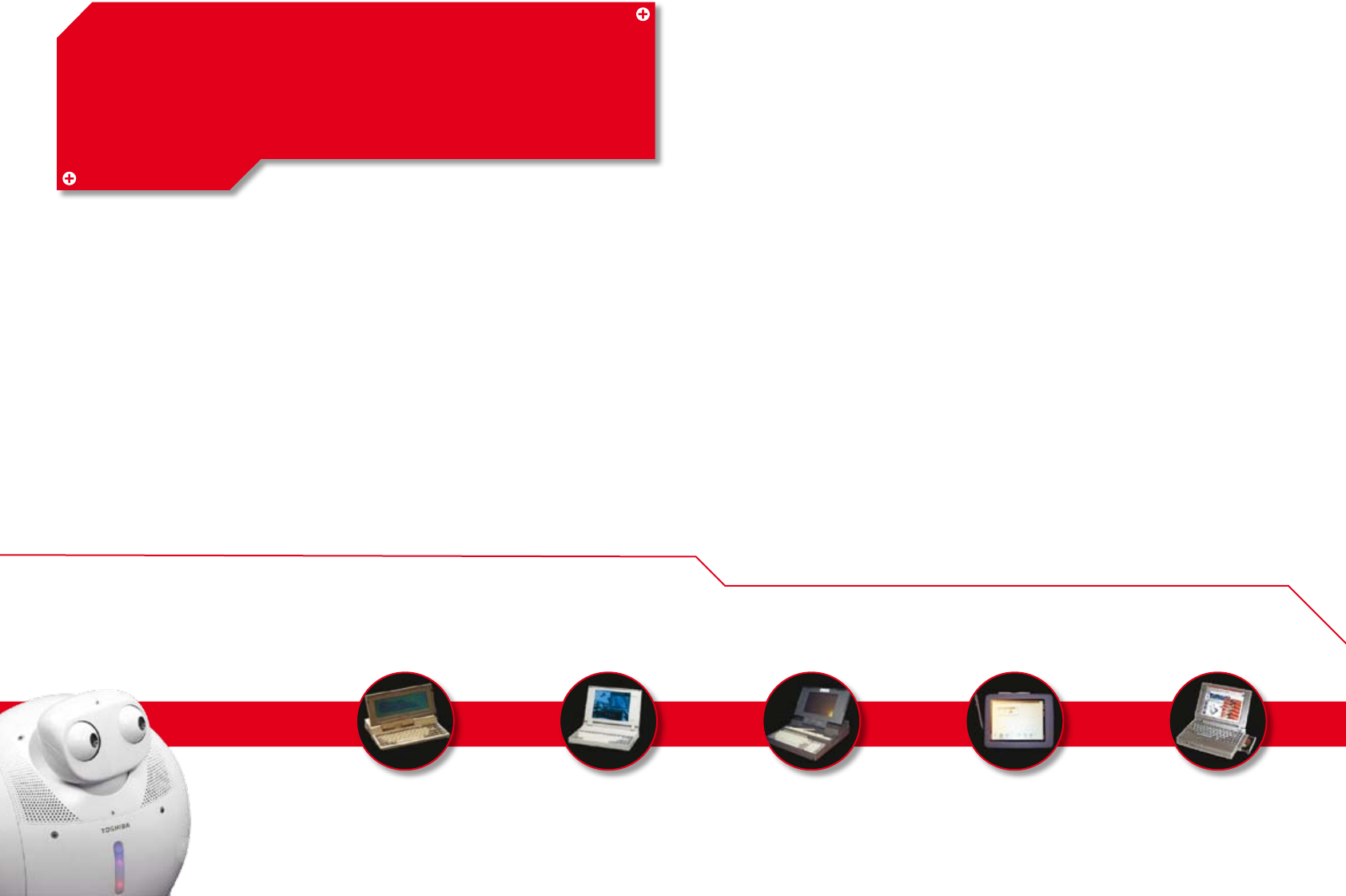
Cooking up new
ways to handle heat.
Bringing new
batteries to life.
Shrinking
components to fit.
Reliability that’s
built in, not bolted on.
Designing and building Notebooks is a complex exercise. It requires
innovation on many fronts, and a careful balance between competing
priorities. This section outlines some of the key challenges, and
introduces a few of the technologies we’ve developed over the years
to overcome them.
In 1985, Toshiba developed the
world’s first industry standard Notebook.
We’ve come a long way since then.
Thermal management is one of the main
challenges in Notebook design, and heat
is one of the leading causes of failure.
The faster the processor, the hotter it gets.
So dissipating heat is essential if you want
more power and more reliability.
Fortunately, we can draw on the expertise
of other divisions to help our efforts.
For instance, our refrigeration engineers
helped develop the world’s first water-
cooled Notebook.
A battery’s usefulness depends on its size,
its energy density, and its ability to be
recharged. All three need to be optimised
for a Notebook. Toshiba has pioneered
many innovations in this area, including
developing the nickel metal hydride
battery, and its successor, the now almost
universal Lithium-Ion battery. Recently,
another innovation emerged from the
laboratory. To see what’s so remarkable
about it, see page 22.
To make Notebooks smaller and more
powerful, parts need to be made smaller
and more powerful too. Toshiba’s expertise
in areas like components (hard disk
drives, screens, batteries and so on) and
semiconductors (chips of all types) helps us
drive this process. For instance, we’ve
pioneered generation after generation of
ever-smaller hard disk drives, culminating
with the current World’s Smallest. For
details, see page 22.
From a user’s point of view, reliability is the
single most important attribute a Notebook
can possess. And that’s why it is for us, too.
Easier said than done, though. Reliability
isn’t something that can be bolted-on, it
has to be built in. So we’ve structured our
business to do this. For instance, we still
design and manufacture our Notebooks
in-house. And we develop most of the
main components – screens, drives, memory
and so on – ourselves. The result? Industry
leading levels of reliability.
1986 – World’s first
Notebook with an
Intel
®
286 Processor.
1987 – World’s first
Notebook with an
Intel
®
386 processor.
1988 – World’s first
Notebook with
an internal
hard disk drive.
1989 – World’s first
Notebook with
a nickel metal-
hydride battery.
1991 – World’s
first Notebook
with an active
matrix screen.
1992 – World’s first
Notebook with
a colour thin film
transistor (TFT) display.
1993 – World’s
first pen-based
Tablet PC.
1994 – World’s
first Notebook with
an Intel
®
Pentium
®
processor.
1985 – Toshiba
develops the world’s
first industry
standard Notebook.
To make sure we last, we aim to be first.
We think that innovation and creativity is fundamental to our long-term future as a business. It’s this attitude that led to the development of
the world’s first Notebook. And it’s why we’ve driven its evolution ever since. Here are some of the firsts we’ve accumulated in that time.
1985 1987 1989 1991 1993


















